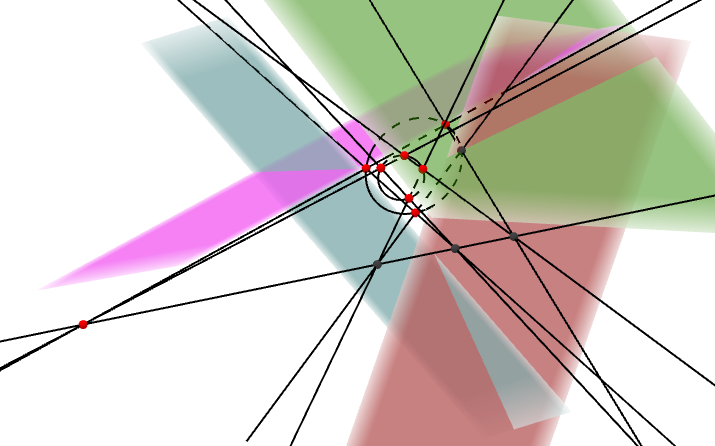Yes, this is true. Applying projective transform you may think that your quadric is a sphere. Then your conics are circles, and you have to prove that $A_1,B_1,A_4,B_4$ are concyclic (or complanar, that is the same). Making inversion in $A_1$ you get a planar problem: $B_1B_2A_2$ and $A_2A_3A_4$ are lines, $B_2A_2A_3B_3$, $B_3A_3B_4A_4$ and $B_1B_2B_3B_4$ are circles, and we need to show that $B_1B_4A_4$ is a line. This is simple angle-chasing: $$\angle (B_1B_4,B_4A_4)=\angle (B_1B_4,B_4B_3)+\angle (B_4B_3,B_4A_4)=\angle (B_1B_2,B_2B_3)+\angle (A_3B_3,A_3A_4)=\angle (B_2A_2,B_2B_3)+\angle (A_3B_3,A_3A_2)=0$$ as desired (I use oriented angles, which are defined modulo $\pi$ and enjoy the property that $\angle (AX,XB)$ is fixed when $X$ runs over a circle passing through $A,B$.)

